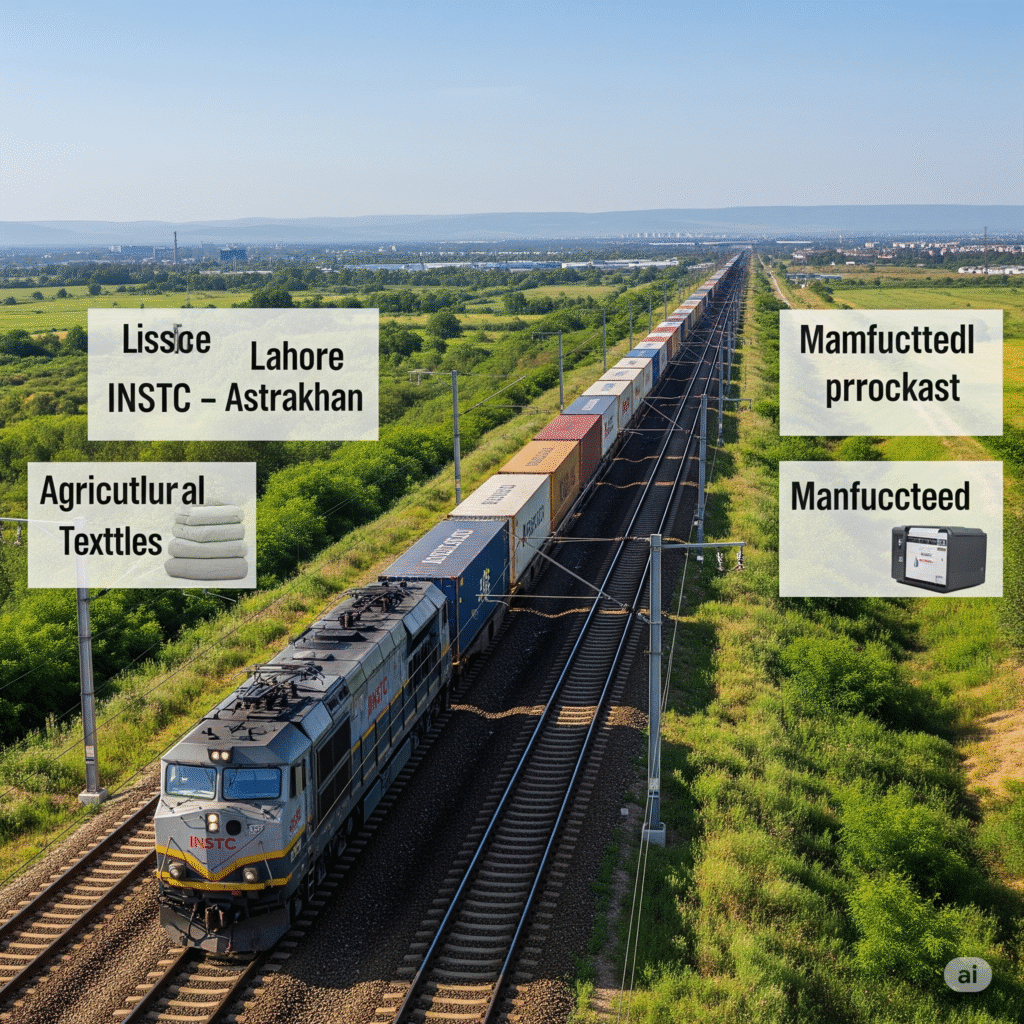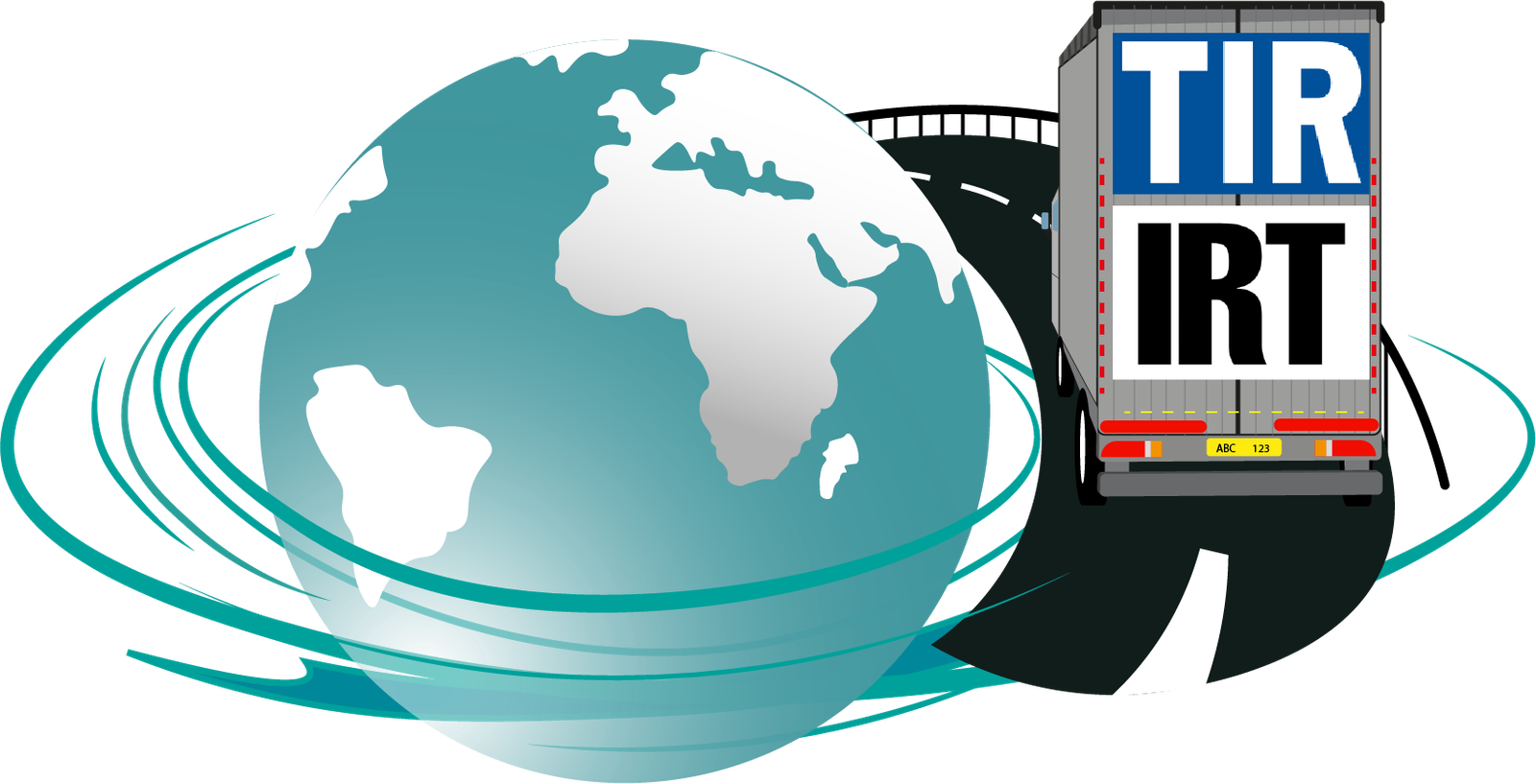In a historic development poised to redefine regional trade dynamics, Pakistan is set to launch its first freight train to Russia on June 22, 2025, from Lahore. This landmark move officially integrates Pakistan into the International North-South Transport Corridor (INSTC) — a strategic, multimodal trade network linking South Asia to Russia and Europe through Central Asia and the Middle East.

Strengthening Regional Logistics through INSTC
The freight train will travel along the Eastern branch of the INSTC, covering approximately 8,000 kilometers through Pakistan, Iran, Turkmenistan, Kazakhstan, and Russia. The route was selected for its speed, cost-effectiveness, and compatibility with existing transshipment infrastructure.
Within Pakistan, the train will cover over 2,000 kilometers from Lahore to the Taftan border before crossing into Iran. At Zahidan, the cargo will be transshipped onto a different gauge railway system to continue its journey northward through Central Asia and into Russia. The destination is Astrakhan, a key logistics hub in southern Russia, with an expected transit time of 20 to 25 days.
Cargo and Economic Prospects
In its initial phase, the train will carry 15 to 16 TEUs (Twenty-foot Equivalent Units) of cargo, comprising key Pakistani exports including leather garments, electro-medical devices, and textiles. Exporters have already committed around 500 tons of cargo for the inaugural journey. As operations scale, the train could accommodate up to 31 TEUs per trip.
This freight service is more than a logistical achievement; it represents a strategic economic alignment. It offers a reliable land-based alternative to traditional maritime routes, significantly reducing transit time and shipping costs. With geopolitical uncertainties affecting traditional trade routes, this overland connection provides enhanced resilience for Pakistani exports and imports.
Government’s Vision for Economic Corridors
The project reflects the government’s broader vision to integrate Pakistan’s transport infrastructure with Central Asian economies, especially Uzbekistan and Kazakhstan. By connecting to key markets overland, Pakistan aims to position itself as a logistics and trade gateway to Eurasia.
The freight corridor is part of a long-term initiative to establish comprehensive economic connectivity, generate revenue, create jobs, and stimulate export-driven growth. The selected route capitalizes on existing infrastructure with compatible gauges across Turkmenistan, Kazakhstan, and Russia—ensuring smoother logistics once the cargo clears the Iranian segment.
Operational and Regulatory Challenges
Despite the progress, some hurdles remain. The gauge difference between Pakistan and Iran requires transshipment at Zahidan, which can slow operations. In addition, international sanctions on Iran and Russia have complicated banking transactions for Pakistani exporters. Regulatory issues related to phytosanitary standards and customs compliance are also being addressed in coordination with relevant ministries.
However, this pilot journey will help identify and resolve bottlenecks. The insights gained will support optimization of future commercial runs, enhancing trade efficiency and volume.
Expanding Bilateral Trade Opportunities
Pakistan aims to diversify and strengthen its trade ties with Russia, and this new route opens doors to two-way commerce. Pakistan’s exports — such as rice, surgical instruments, and fabrics — can now reach Russian markets faster, while imports like fertilizers, petroleum products, wheat, and industrial machinery can be delivered more efficiently.
This initiative also aligns with Pakistan’s objective to reduce reliance on congested maritime chokepoints by building alternative corridors that are faster, safer, and economically viable.
Role of the International Road Transport Chamber of Pakistan (IRTCoP)
The successful execution of this freight train initiative is also supported by Pakistan’s adoption of the TIR (Transports Internationaux Routiers) license framework, promoted by the International Road Transport Chamber of Pakistan (IRTCoP). The TIR system simplifies and secures international freight movement across multiple countries, reducing transit delays and ensuring cargo integrity. IRTCoP has played a vital role in facilitating seamless cross-border coordination, enabling efficient overland logistics along the INSTC corridor.
Conclusion: A New Chapter in Pakistan’s Trade Future
The launch of the Lahore-to-Astrakhan freight train is more than a logistical feat — it is a declaration of economic ambition. Pakistan is reimagining its place in global trade by establishing itself as a critical link between South Asia and Eurasia. With the world watching, this milestone signals the beginning of a new chapter — one driven by connectivity, commerce, and strategic foresight.
